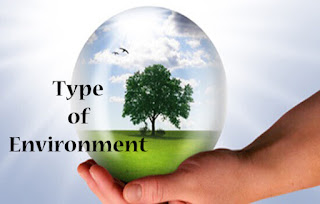Lesson Plan of Types of EnvironmentGeneral Science Grade IV
Lesson Plan of Types of Environment
General Science Grade IV
Students’ Learning Outcomes
·
Differentiate between
different types of environments.
·
Explain the characteristics
of animals and plants which enable them to survive in a particular environment.
Information for Teachers
·
There are three types of
environments:
n Land (terrestrial) environment.
n Water (aquatic) environment.
n Air environment.
·
Mountains, deserts, forests
and plain areas are the examples of land (terrestrial) environment.
·
Rivers, lakes, ponds and seas
are the examples of water (aquatic) environment.
·
The place where birds and
insects fly is an example of air environment.
·
Land animals (particularly
desert animals) have thick skin to stop the loss of water from their body.
·
Land animals have strong legs
for movement.
·
In aquatic environment,
fishes have gills for respiration, fins and boat-like body swimming.
·
Some animals (birds, insects)
fly with the help of their wings.
·
Plants have roots to absorb
water and for holding the plant body in soil.
·
Plants have pores in their
leaves for exchange of gases.
·
Water plants have elastic
body while air sacs for floating. These characteristics prevent them from
breaking due to water currents.
Material / Resources
Pictures / charts of terrestrial, aquatic and
air habitats, textbook
Worm up Activity
Ask students:
·
What is the environment of
our class? Land, Water or Air.
·
Show the picture / chart of a
plant and an animal to students and ask:
§ Which part of the plant helps in absorbing
water?
§ --Which part of the body does an animal use for
movement?
·
Ask students to share with the class what they
know about birds.
DevelopmentActivity 1
·
Show pictures 9cut from
books/ newspaper / magazines / stickers) of different animals and plants that
live in following areas to students. By using these pictures explain;
n Mountainous animals and plants
n Desert animals and plants
n Plain area animals and plants
n Forest animals and plants
·
Ask students to observe and
tell how these animals and plants live on land.
·
Explain the characteristics
of animals and plants for land environment (the role of legs and skin in
animals while the role of roots and leaves in plants may be taught)
Activity 2
·
Show pictures (cut outs from
books / magazines / newspaper/ stickers) of aquatic animals and plants. By
using these pictures explain the following:
n Gills for respiration
n Fins for swimming
·
Ask students to observe and
tell how these animals live in water.
·
Explain the characteristics
of animals and plants suitable for aquatic environment (the characteristics of
fins, gills and boat-shaped body in fishes while the characteristic of leaves,
roots and stems in aquatic plants may be taught)
Activity 3
 ·
Show pictures (cut outs from
books / magazines / newspaper/ stickers)of the animals (insects, birds and bat
that fly in air)
·
Show pictures (cut outs from
books / magazines / newspaper/ stickers)of the animals (insects, birds and bat
that fly in air)
·
Ask students to observe how
birds fly in the air.
·
Discuss its characteristics
in such animals that help them in flying. (The characteristics of wings, light
body weight and strong flight muscles may be taught).
Activity 4
·
Draw the following table on board and fill it by
interactive questioning and answering with the students.
Parts of body
|
Animals in:
|
||
Land Environment
|
Air Environment
|
Water Environment
|
|
For Movement
|
|||
For Respiration
|
|||
Examples
|
|||
Sum up / Conclusion
·
There are three types of
environments;
n Water (aquatic) environment
n Air environment
·
Organisms have
characteristics that enable them to live in a particular environment.
·
Terrestrial animals have
thick skin for the prevention of water loss; strong legs for movement and lungs
for respiration.
·
Aquatic animals have fins and
tail for movement while gills for respiration.
·
Animals that fly in air have
hollow bones and wings that help in flight.
Assessment
·
Ask following questions from
students:
n Name any four animals that live in water.
n Name any four plants that live on land.
n Do you know any animal that can live both in
water and land?
n How do insects and birds fly?
n A fish can live in water but a cat can’t why?
Follow up
Activity
·
Divide students into groups
of 4-5 individuals and assign them following tasks;
n Search magazines / newspaper / books for
pictures of animals from different environment (plain, mountainous, deserts,
aquatic areas).
n Cut and paste the pictures on the top of a
plain leaving space underneath for writing. There should be one picture per
paper.
n Identify the characteristics of animals and
write them below the picture. Also write why they believe that characteristic
is useful.
n Imagine the animal in the new environment and
write how the characteristic will be helpful or harmful in the new area.
·
Each group will assemble the
information in the following format.
Characteristics of animals:
How these characteristics are helpful to
animals?
If the animal is in different environment, how the
characteristics will be helpful or harmful?









Comments
Post a Comment